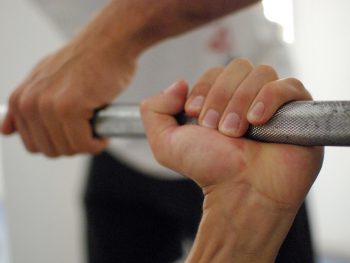
Does CrossFit cardio exist?
For many people, “cardio” is something that happens to their heart and lungs only while sitting on a bike, rowing machine, or running.
Additionally, in their minds, this also only happens when they are doing these things for long, extended periods of time: long rowing pieces, a 20 minute run, a 10 mile bike ride.
In my years of coaching and owning a gym, I can’t tell you how many times I have heard, “where’s the cardio?” Or, “we’ve been really light on cardio the past couple of weeks, what’s up?”
Today we’re here to answer the question – is CrossFit cardio a thing? Is CrossFit actually light on cardio, or is the age-old media definition of what people understand as cardio just skewed?
What is cardio?
Conventional wisdom holds that extended bouts of monostructural training (run, bike, swim, row, etc.), commonly referred to as “cardio,” confer distinct and powerful advantage to athletic conditioning.
Traditional “cardio” may be neither as distinct nor as powerful a contribution to general conditioning as widely believed.
In fact, cardio weight training provides a more effective stimulus for improving endurance than running, rowing, cycling or other traditional monostructural workouts.
“But I need to do extra cardio to lose weight…”
No. No you don’t. The “fat burning zone” is a joke. You can do hundreds of hours of cardio and burn little to no fat after several months of training and healthy eating.
If you’re dieting to improve body composition and your training volume goes down but your cardio goes up, what’s the primary stimulus your body is going to need to adapt to? The cardio. Now how does one become more efficient at slow, aerobic cardio? By decreasing overall energy output, which means burning fewer calories to do the same activity.
So how do we increase energetic/caloric output? We get rid of the most metabolically expensive tissue we have that’s taking up those calories, which means our muscle. The net result is that you just cut into your muscle tissue decreasing your metabolism and making you weaker. Not the outcome you wanted.
Aerobic vs. Anerobic – what’s the difference?
1. Aerobic training, what most people think of when they say “cardio” tends to make you LESS explosive but good at moving slowly for a long time.
2. Anaerobic training builds muscle.
3. Both burn fat, but anaerobic burns it much faster and more efficiently (albeit for shorter times)
4. Anaerobic training when done properly can build AEROBIC capacity. You can read more about the body’s energy systems and aerobic vs. anaerobic capacity in our previous blog post here.
What does CrossFit cardio look like?
In CrossFit, workouts comprised of elements traditionally seen as resistance or strength-training exercises are used to elicit a potent cardiorespiratory stimulus. For this post, we’re going to call this CrossFit cardio!
These are your kettlebell swings, your dumbbell snatches – think about when you have a higher volume of these, and you’re moving quickly (for time, anyone?), you’ll breathe heavy while you’re working through the reps.
You might find that your breathing and heart rate are similar to what they would be on a run.
You might also find that they’re a little bit heavier, and a little bit harder – that’s ok too. We’re typically not pushing ourselves quite as hard in a monostructural workout without some weight resistance mixed in.
The next time you’re in class, and you’re looking at the workout thinking, “where’s the cardio?,” instead ask yourself, “will this workout jack up my heart rate and make me breathe heavily? If the answer is yes, then you’ve found your cardio.













 Holiday Health & Fitness Tips
Holiday Health & Fitness Tips